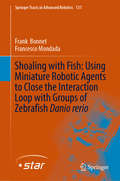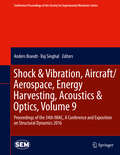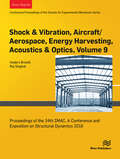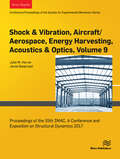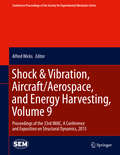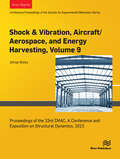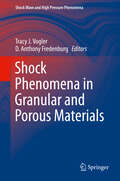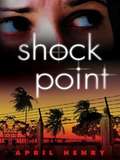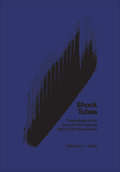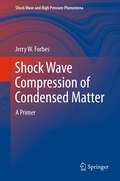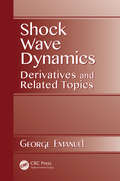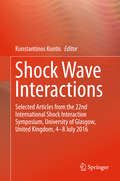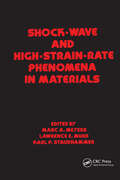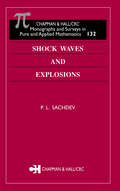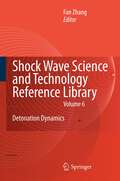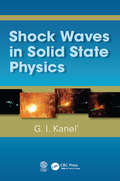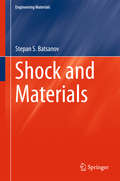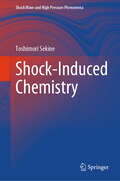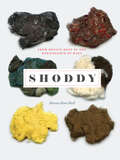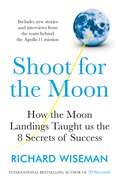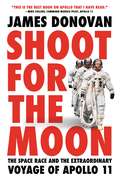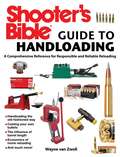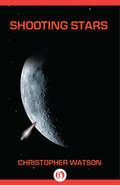- Table View
- List View
Shoaling with Fish: Using Miniature Robotic Agents to Close the Interaction Loop with Groups of Zebrafish Danio rerio (Springer Tracts in Advanced Robotics #131)
by Francesco Mondada Frank BonnetRobotic animals are nowadays developed for various types of research, such as bio-inspired robotics, biomimetics and animal behavior studies. More specifically, in the case of collective animal behavior research, the robotic device can interact with animals by generating and exploiting signals relevant for social behavior. Once perceived by the animal society as conspecific, these robots can become powerful tools to study the animal behaviors, as they can at the same time monitor the changes in behavior and influence the collective choices of the animal society.In this book, we present novel robotized tools that can integrate shoals of fish in order to study their collective behaviors. We used the current state of the art on the zebrafish social behavior to define the specifications of the robots, and we performed stimuli analysis to improve their developments. Bio-inspired controllers were designed based on data extracted from experiments with zebrafish for the robots to mimic the zebrafish locomotion underwater. Experiments involving mixed groups of fish and robots qualified the robotic system to be integrated among a zebrafish shoal and to be able to influence the collective decisions of the fish. These results are very promising for the field of animal-robot interaction studies, as we showed the effect of the robots in long-duration experiments and repetitively, with the same order of response from the animals.
Shock & Vibration, Aircraft/Aerospace, Energy Harvesting, Acoustics & Optics, Volume 9
by Anders Brandt Raj SinghalShock Vibration, Aircraft /Aerospace, Energy Harvesting, Acoustics Optics, Volume 9. Proceedings of the 34th IMAC, A Conference and Exposition on Dynamics of Multiphysical Systems: From Active Materials to Vibroacoustics, 2016, the ninth volume of ten from the Conference brings together contributions to this important area of research and engineering. The collection presents early fi ndings and case studies on fundamental and applied aspects of Structural Dynamics, including papers on: * Energy Harvesting * Adaptive Support * Shock Calibration * Operating Data Applications * Aerospace Testing Techniques * Aircraft /Aerospace Applications * Joints * Acoustics & Optics * Other Sensing
Shock & Vibration, Aircraft/Aerospace, Energy Harvesting, Acoustics & Optics, Volume 9: Proceedings of the 34th IMAC, A Conference and Exposition on Structural Dynamics 2016
by Anders Brandt Raj SinghalShock Vibration, Aircraft /Aerospace, Energy Harvesting, Acoustics Optics, Volume 9. Proceedings of the 34th IMAC, A Conference and Exposition on Dynamics of Multiphysical Systems: From Active Materials to Vibroacoustics, 2016, the ninth volume of ten from the Conference brings together contributions to this important area of research and engineering. The collection presents early findings and case studies on fundamental and applied aspects of Structural Dynamics, including papers on: Energy Harvesting Adaptive Support Shock Calibration Operating Data Applications Aerospace Testing Techniques Aircraft /Aerospace Applications Joints Acoustics & Optics Other Sensing.
Shock & Vibration, Aircraft/Aerospace, Energy Harvesting, Acoustics & Optics, Volume 9: Proceedings of the 35th IMAC, A Conference and Exposition on Structural Dynamics 2017
by Julie M. Harvie Javad BaqersadShock & Vibration, Aircraft/Aerospace and Energy Harvesting, Volume 9: Proceedings of the 35th IMAC, A Conference and Exposition on Structural Dynamics, 2017, the ninth volume of ten from the Conference brings together contributions to this important area of research and engineering. The collection presents early findings and case studies on fundamental and applied aspects of Shock & Vibration, Aircraft/Aerospace and Energy Harvesting including papers on: Shock & Vibration Testing Aircraft/Aerospace Applications Optical Techniques: Digital Image Correlation Vibration Suppression & Control Damage Detection Energy Harvesting.
Shock & Vibration, Aircraft/Aerospace, and Energy Harvesting, Volume 9
by Alfred WicksShock & Vibration, Aircraft/Aerospace, Energy Harvesting, Volume 9: Proceedings of the 33rd IMAC, A Conference and Exposition on Structural Dynamics, 2015, the ninth volume of ten from the Conference brings together contributions to this important area of research and engineering. The collection presents early findings and case studies on fundamental and applied aspects of Shock & Vibration, Aircraft/Aerospace , Energy Harvesting, including papers on: Energy Harvesting Adaptive Support Shock Calibration Operating Data Applications
Shock & Vibration, Aircraft/Aerospace, and Energy Harvesting, Volume 9: Proceedings of the 33rd IMAC, A Conference and Exposition on Structural Dynamics, 2015
by Alfred WicksShock & Vibration, Aircraft/Aerospace, Energy Harvesting, Volume 9: Proceedings of the 33rd IMAC, A Conference and Exposition on Structural Dynamics, 2015, the ninth volume of ten from the Conference brings together contributions to this important area of research and engineering. The collection presents early findings and case studies on fundamental and applied aspects of Shock & Vibration, Aircraft/Aerospace, Energy Harvesting, including papers on: Energy Harvesting Adaptive Support Shock Calibration Operating Data Applications.
Shock Focusing Phenomena: High Energy Density Phenomena And Dynamics Of Converging Shocks (Shock Wave And High Pressure Phenomena Ser.)
by Nicholas Apazidis Veronica EliassonOne of the main reasons for continuing interest in shock focusing is its ability to concentrate energy in a small volume and produce extreme temperatures and pressures in fluids in a controlled laboratory environment. The phenomenon of shock wave focusing leading to extreme conditions in fluids during micro- and nanosecond time intervals is a spectacular example of mechanics at small length and time scales revealing the major properties of shock dynamics including high-temperature gas phenomena. Production of high-energy concentrations in gases and fluids with star-like temperatures and extreme pressures by means of a stable imploding shock is of great interest not only in its own right but also because of the connection to a multitude of phenomena in nature, technology and medicine.
Shock Phenomena in Granular and Porous Materials (Shock Wave and High Pressure Phenomena)
by Tracy J. Vogler D. Anthony FredenburgGranular forms of common materials such as metals and ceramics, sands and soils, porous energetic materials (explosives, reactive mixtures), and foams exhibit interesting behaviors due to their heterogeneity and critical length scale, typically commensurate with the grain or pore size. Under extreme conditions of impact, granular and porous materials display highly localized phenomena such as fracture, inelastic deformation, and the closure of voids, which in turn strongly influence the bulk response. Due to the complex nature of these interactions and the short time scales involved, computational methods have proven to be powerful tools to investigate these phenomena. Thus, the coupled use of experiment, theory, and simulation is critical to advancing our understanding of shock processes in initially porous and granular materials. This is a comprehensive volume on granular and porous materials for researchers working in the area of shock and impact physics. The book is divided into three sections, where the first presents the fundamentals of shock physics as it pertains to the equation of state, compaction, and strength properties of porous materials. Building on these fundamentals, the next section examines several applications where dynamic processes involving initially porous materials are prevalent, focusing on the areas of penetration, planetary impact, and reactive munitions. The final section provides a look at emerging areas in the field, where the expansion of experimental and computational capabilities are opening the door for new opportunities in the areas of advanced light sources, molecular dynamics modeling, and additively manufactured porous structures. By intermixing experiment, theory, and simulation throughout, this book serves as an excellent, up-to-date desk reference for those in the field of shock compression science of porous and granular materials.
Shock Point
by April HenryCassie discovers that her stepfather, Rick, a teen psychiatrist, has been illegally prescribing a new behavioral drug to his patients?and three teens have died. Before she can report him, Rick commits Cassie to Peaceful Cove, a boot camp for troubled teens in Mexico. Cassie knows she has to get out now, before more teens die. But no one has ever escaped from Peaceful Cove alive?and even if Cassie gets over the walls and survives the Mexican desert, will anyone believe her story? .
Shock Tubes: Proceedings of the Seventh International Shock Tube Symposium held at University of Toronto, Toronto, Canada 23-25 June 1969
by Irving Israel GlassThis volume contains the proceedings of a symposium held at the University of Toronto in June 1969. The symposium consisted of six sessions; each containing an invited paper, followed by six contributed papers reporting on recent, relevant research and development. The topics are: a review of research problems in basic shock tube flows and the possibilities for the shock tube in the future; driving techniques; explosive drivers; theoretical and experimental research in electromagnetic shock tubes; chemical kinetics and spectroscopy; and a review of shock tube diagnostics, instrumentation and fundamental data as well as the measurement of physical quantities.
Shock Wave Compression of Condensed Matter: A Primer
by Jerry W ForbesThis book introduces the core concepts of the shock wave physics of condensed matter, taking a continuum mechanics approach to examine liquids and isotropic solids. The text primarily focuses on one-dimensional uniaxial compression in order to show the key features of condensed matter's response to shock wave loading. The first four chapters are specifically designed to quickly familiarize physical scientists and engineers with how shock waves interact with other shock waves or material boundaries, as well as to allow readers to better understand shock wave literature, use basic data analysis techniques, and design simple 1-D shock wave experiments. This is achieved by first presenting the steady one-dimensional strain conservation laws using shock wave impedance matching, which insures conservation of mass, momentum and energy. Here, the initial emphasis is on the meaning of shock wave and mass velocities in a laboratory coordinate system. An overview of basic experimental techniques for measuring pressure, shock velocity, mass velocity, compression and internal energy of steady 1-D shock waves is then presented. In the second part of the book, more advanced topics are progressively introduced: thermodynamic surfaces are used to describe equilibrium flow behavior, first-order Maxwell solid models are used to describe time-dependent flow behavior, descriptions of detonation shock waves in ideal and non-ideal explosives are provided, and lastly, a select group of current issues in shock wave physics are discussed in the final chapter.
Shock Wave Dynamics: Derivatives and Related Topics
by George EmanuelWorking knowledge of the relations of various quantities and their derivatives across a shock wave is useful for any advanced research involving shock waves. Although these relations can be derived in principle by any diligent student of the subject, the derivations are often not trivial, and once derived, neither the approach nor the result can be
Shock Wave Interactions: 22nd International Shock Interaction Symposium
by Konstantinos KontisThis edited monograph contains the proceedings of the International Shock Interaction Symposium, which emerged as an heir to both the Mach Reflection and Shock Vortex Interaction Symposia. These scientific biannual meetings provide an ideal platform to expose new developments and discuss recent challenges in the field of shock wave interaction phenomena. The goal of the symposia is to offer a forum for international interaction between young and established scientists in the field of shock and blast wave interaction phenomena. The target audience of this book comprises primarily researchers and experts in the field of shock waves, but the book may also be beneficial for young scientists and graduate students alike.
Shock Wave and High-Strain-Rate Phenomena in Materials
by 0 Meyers,These proceedings of EXPLOMET 90, the International Conference on the Materials Effects of Shock-Wave and High-Strain-Rate Phenomena, held August 1990, in La Jolla, California, represent a global and up-to-date appraisal of this field. Contributions (more than 100) deal with high-strain-rate deforma
Shock Waves & Explosions (Monographs and Surveys in Pure and Applied Mathematics)
by P.L. SachdevUnderstanding the causes and effects of explosions is important to experts in a broad range of disciplines, including the military, industrial and environmental research, aeronautic engineering, and applied mathematics. Offering an introductory review of historic research, Shock Waves and Explosions brings analytic and computational methods
Shock Waves Science and Technology Library, Vol. 6
by F. ZhangThis book, as a volume of the Shock Wave Science and Technology Reference Library, is primarily concerned with the fundamental theory of detonation physics in gaseous and condensed phase reactive media. The detonation process involves complex chemical reaction and fluid dynamics, accompanied by intricate effects of heat, light, electricity and magnetism - a contemporary research field that has found wide applications in propulsion and power, hazard prevention as well as military engineering. The seven extensive chapters contained in this volume are: - Chemical Equilibrium Detonation (S Bastea and LE Fried) - Steady One-Dimensional Detonations (A Higgins) - Detonation Instability (HD Ng and F Zhang) - Dynamic Parameters of Detonation (AA Vasiliev) - Multi-Scaled Cellular Detonation (D Desbordes and HN Presles) - Condensed Matter Detonation: Theory and Practice (C Tarver) - Theory of Detonation Shock Dynamics (JB Bdzil and DS Stewart) The chapters are thematically interrelated in a systematic descriptive approach, though, each chapter is self-contained and can be read independently from the others. It offers a timely reference of theoretical detonation physics for graduate students as well as professional scientists and engineers.
Shock Waves in Solid State Physics
by G. I. Kanel'Methods and the latest results of experimental studies of the strength properties, polymorphism and metastable states of materials and substances with extremely short durations of shock-wave action are presented. The author provides a comprehensive and theoretical description of specific features of the dynamics of elastoplastic shock compression waves in relaxing media. The presentation is preceded by a detailed description of the theoretical foundations of the method and a brief discussion of the basic methods of generating and diagnosing shock waves in solids. Key Selling Features: Addresses dynamic elastic-plastic response, spallation, and shock-induced phase transformation. Provides a centralized presentation of topics of interest to the shock physics community Presents new data on the mechanism and basic patterns of sub-microsecond polymorphic transformations and phase transitions. Investigates destruction waves in shock-compressed glasses. Analyzes the behavior of highly hard brittle materials under shock-wave loading and ways to diagnose fracture.
Shock and Materials: Modification And Synthesis Under High-pressure Shock Compression (Shock Wave And High Pressure Phenomena Ser.)
by Stepan S. BatsanovThis book highlights how the properties and structure of materials are affected by dynamic high pressures generated by explosions, projectile impacts, laser compression, electric discharge or ball milling. Starting with the basics of shock-wave physics and an outline of experimental techniques, it then surveys dynamic compressibility and equations of state of various substances, phase transitions and syntheses of novel compounds under shock. It covers various industrial applications including hardening of metals and grinding (fragmentation) of solids, saturation of solids with defects for use as catalysts, production of superhard materials (synthetic diamond, BN (boron nitride)) and nanomaterials, especially nanodiamond, and discusses state-of-the-art techniques such as combining dynamic and static compression to obtain monolithic materials.
Shock-Induced Chemistry (Shock Wave and High Pressure Phenomena)
by Toshimori SekineThis book begins with the history and background of the subject and then describes key experimental methods. Subsequent chapters are devoted to individual topics of chemistry and materials, namely, synthesis of hard materials, ceramics at high pressure, shock-induced chemical operations, biomolecules, meteorites, and metals and molecules under extreme conditions. Lastly, it offers applications to earth and planetary science and ends with future perspectives. Shock waves dynamically produce high pressure and temperature conditions and offer interesting areas for studies on unique chemical reactions. This book introduces readers to modern shock-induced chemistry and its applications and provides an update of topics in that discipline. Readers can gain a comprehensive understanding of current shock-induced chemistry and its versatile applications.
Shoddy: From Devil’s Dust to the Renaissance of Rags (science.culture)
by Hanna Rose ShellThe history of modern-day old clothes recycling begins with a thing called shoddy. Starting in the early 1800s, shoddy was the name given to a new material made from reclaimed wool, and to one of the earliest forms of industrial recycling. Old rags and leftover fabric clippings were ground to bits by a machine known as “the devil” and then re-used. Usually undisclosed, shoddy–also known as reworked wool–became suit jackets, army blankets, mattress stuffing, and much more. Shoddy is the afterlife of rags. And Shoddy, the book, reveals hidden worlds of textile intrigue. In Shoddy: From Devil’s Dust to the Renaissance of Rags, Hanna Rose Shell takes readers on a journey to discover shoddy, from Haiti to the “shoddy towns” of West Yorkshire in England, to the United States, back in time to the British cholera epidemics and the American Civil War, and into agricultural fields, textile labs, and rag-shredding factories. Shell’s narrative is both literary and historical, drawing on an extraordinary range of sources, from court cases to military uniforms, mattress labels to medical textbooks, political cartoons to high art. Shoddy moves between genres, bringing richly drawn characters and unexpected objects to life. Along the way, shoddy becomes equally an evocative object and a portal into another world. Almost since the time it first appeared, shoddy was both ubiquitous and controversial. In part because it was often so hard to detect, it was inherently suspicious. Public health experts worried about sanitation and disease—how could old clothes be disinfected? As well, the idea of wearing someone else’s old clothes so close to your own skin was discomforting in and of itself. Could you sleep peacefully knowing that your mattress was very likely to be stuffed with dead soldiers’ overcoats? The use of the term “virgin” wool, the idea of virginity in relation to clothes, in fact emerged as an effort by the wool industry to counter shoddy’s appeal: to make shoddy seem shoddy. Over time, shoddy would capture a host of personal, ethical, commercial, and societal failings. And yet, there was always, within shoddy, the alluring concept of regeneration, of what we today think of as conscious clothing, eco-fashion, sustainable textiles. Shell exposes an interwoven tale of industrial espionage, political infighting, scientific inquiry, ethnic prejudices, and war profiteering. Discarded clothes may make many journeys over the course of several lifetimes. Not only in your garments, but under your rug, in your mattress pads, piano blankets, in the peculiar confetti-like stuffing in your mailing envelopes, even in the insulation in your walls. Though it began with wool, over the past century the shredding “devil” has turned to synthetics from nylon stockings to Kevlar. Shoddy is likely connected to something you are wearing right now. After reading, you will never use the word shoddy or think about your clothes, the environment, sustainability, or the intermingled world around you the same way again.
Shoot for the Moon: How the Moon Landings Taught us the 8 Secrets of Success
by Richard Wiseman'Fascinating new book examines the history of Nasa's Apollo space missions' Daily Mail_______Eight key lessons to revolutionise your life with the mindset that got man to the moon.20th July 1969: Neil Armstrong becomes the first person to walk on the Moon. We all recognize this to be one of mankind's greatest achievements. Yet what did it take to make John F. Kennedy's dream a reality?In this remarkable book, Professor Richard Wiseman presents a pioneering study of the mindset that took humanity to the Moon, and shows how you can harness and use it to achieve the extraordinary in your everyday life.Combining personal interviews, mission archives and cutting-edge psychology, Wiseman embarks on the ultimate voyage through inner space. Along the way he identifies eight key principles that make up the Apollo Mindset, including how pessimism is crucial to success, and how fear and tragedy can be transformed into hope and optimism. You will discover a series of practical techniques that you can use to incorporate these winning principles into both your professional and personal life. Whether you want to start a business venture, change careers, find your perfect partner, raise a loving family, get promoted, gain a new qualification, escape the rat race, or pursue a lifelong passion, these techniques will help you to reach your own Moon.
Shoot for the Moon: How the Moon Landings Taught us the 8 Secrets of Success
by Richard Wiseman20th July 1969: Neil Armstrong becomes the first person to walk on the Moon. We all recognize this to be one of mankind's greatest achievements. Yet what did it take to make John F. Kennedy's dream a reality?In this remarkable book, Professor Richard Wiseman presents a pioneering study of the mindset that took humanity to the Moon, and shows how you can harness and use it to achieve the extraordinary in your everyday life.Combining personal interviews, mission archives and cutting-edge psychology, Wiseman embarks on the ultimate voyage through inner space. Along the way he identifies eight key principles that make up the Apollo Mindset, including how pessimism is crucial to success, and how fear and tragedy can be transformed into hope and optimism. You will discover a series of practical techniques that you can use to incorporate these winning principles into both your professional and personal life. Whether you want to start a business venture, change careers, find your perfect partner, raise a loving family, get promoted, gain a new qualification, escape the rat race, or pursue a lifelong passion, these techniques will help you to reach your own Moon.(P)2019 Quercus Editions Limited
Shoot for the Moon: The Space Race and the Extraordinary Voyage of Apollo 11
by James Donovan"This is the best book on Apollo that I have read. Extensively researched and meticulously accurate, it successfully traces not only the technical highlights of the program but also the contributions of the extraordinary people who made it possible." -Mike Collins, command module pilot, Apollo 11When the alarm went off forty thousand feet above the moon's surface, both astronauts looked down at the computer to see 1202 flashing on the readout. Neither of them knew what it meant, and time was running out...ON JULY 20, 1969, Neil Armstrong and Buzz Aldrin became the first humans to walk on the moon. One of the world's greatest technological achievements-and a triumph of American spirit and ingenuity-the Apollo 11 mission was a mammoth undertaking involving more than 410,000 men and women dedicated to winning the space race against the Soviets. Set amid the tensions of the Cold War and the upheavals of the sixties, and filled with first-person, behind-the-scenes details, Shoot for theMoon is a gripping account of the dangers, the challenges, and the sheer determination that defined not only Apollo 11, but also the Mercury and Gemini missions that came before it. From the shock of Sputnik and the heart-stopping final minutes of John Glenn's Mercury flight to the deadly whirligig of Gemini 8, the doomed Apollo 1 mission, and that perilous landing on the Sea of Tranquility-when the entire world held its breath while Armstrong and Aldrin battled computer alarms, low fuel, and other problems- James Donovan tells the whole story. Both sweeping and intimate, Shoot for the Moon is "a powerfully written and irresistible celebration" (Booklist, starred review) of one of humankind's most extraordinary feats of exploration.
Shooter's Bible Guide to Handloading: A Comprehensive Reference for Responsible and Reliable Reloading
by Wayne Van ZwollA thorough resource on handloading at home, Shooter’s Bible Guide to Handloading provides detailed information about the history of handloading and key figures’ innovations, a simple explanation of hand reloading, selecting the basic tools needed, and choosing your cases, dies, primers, and powders as well as step-by-step instructions for reloading firearm cartridges and how to test your loads at the range. The text is supplemented by more than one hundred detailed photographs that illustrate the various types of reloading equipment available and provide guidance in performing the actions that result in a handloaded cartridge. The Shooter’s Bible Guide to Handloading covers interesting engineering questions the handloader may consider, including bullet integrity, copper bullets, and energy versus killing power. Other topics covered include: Handloading the old-fashioned way Casting your own bullets The influence of barrel length Economics of home reloading And much more! Pick up a copy of the Shooter’s Bible Guide to Handloading to learn everything you need to know about reloading by hand at home.
Shooting Stars
by Christopher WatsonA novel of sabotage and intrigue in the futuristic space world of 2013, Shooting Stars is a compelling story of an intrepid astronaut and a life-threatening interplanetary skydive. The sole survivor of a catastrophic space accident, Mac Harrison must now grapple with survivor guilt and try to keep his life from wildly spinning out of control. While he tries to reclaim his identity, the formidable owner of a failing moon colony asks him to attempt an audacious "skydive" from the highest altitude ever attempted--the moon. The colony's rivals have other plans. In this enthralling story, Mac must use all his resources to avoid annihilation. It is impossible to know whether Mac will ever see Earth again in one piece until the very last second.
